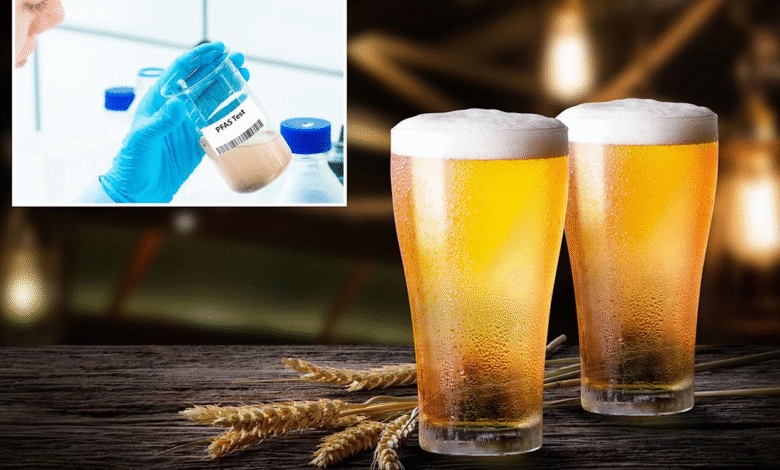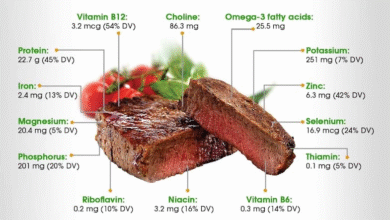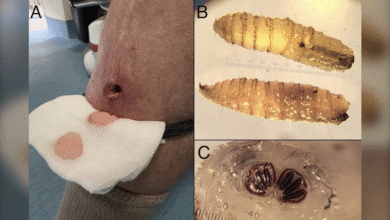Forever Chemicals in Beer: A Study on PFAS Contamination

Recent studies have raised alarming concerns about forever chemicals in beer, revealing that many American brews contain levels of PFAS that surpass EPA safety limits. These persistent pollutants, commonly found in contaminated water supplies, can somehow infiltrate the brewing process, leading to beer contamination that may affect the safety of our favorite beverages. Researchers at the ACS’ Environmental Science & Technology have highlighted a direct correlation between PFAS concentrations in municipal drinking water and the beers brewed in those areas, with 95% of tested samples showing detectable levels. This brewing crisis points to a pressing issue of pollution in beverages and urges for enhanced water treatment strategies. As consumers, understanding the implications of forever chemicals is vital not only for drinking water safety but also for the integrity of the beers we enjoy.
In the realm of beverage safety, the spotlight is shifting to the presence of persistent organic pollutants, particularly polyfluoroalkyl substances (PFAS), that have been linked to brewing practices. These contaminants, often termed forever chemicals, have made their way into many drinks, prompting serious discussions around beer safety and public health. Studies indicate that the beer produced in regions with higher PFAS levels in the water supply is especially susceptible to these pollutants, raising concerns about the overall integrity of our drinking experiences. Understanding the implications of such contamination extends beyond just concerns over taste; it touches on broader issues of environmental pollution and consumer health. As consumers become more aware, the brewing industry is urged to adopt better filtration methods to ensure the quality and safety of the beers we cherish.
The Impact of PFAS on Beer Quality
The presence of PFAS, commonly known as “forever chemicals,” poses significant concerns not just for public health but also for the quality of beverages, particularly beer. Recent findings from a study conducted by the ACS’ Environmental Science & Technology have indicated that many beers brewed across the US contain detectable levels of these substances. With PFAS often entering groundwater supplies, the implications for breweries are serious, as the contamination can compromise the purity of the water used, and consequently, the beer produced.
As breweries typically utilize water treatment systems to ensure the cleanliness of their brewing ingredients, these systems are not specifically designed to filter out PFAS compounds. This means that while optical clarity and taste may be maintained, the safety of the product concerning chemicals like perfluorooctanesulfonate and perfluorooctanoic acid remains questionable. In light of these findings, it’s vital for both consumers and brewers to consider the long-term health impacts of continually consuming products potentially contaminated with these forever chemicals.
Forever Chemicals in Beer: A Growing Concern
The revelation of elevated PFAS levels across a wide range of US beers provokes a significant concern for health safety and drinking habits. In the study examined, PFAS contamination was not limited to a few select brands but was found in 95% of the beers tested. This alarming statistic emphasizes the need for stricter monitoring of water sources used in beer production. With increasing evidence linking PFAS in drinking water to levels found in beer, consumers are left questioning the safety standards upheld by breweries regarding water quality and ingredient sourcing.
Furthermore, as the Environmental Protection Agency (EPA) sets limits for PFAS concentrations in drinking water, breweries must adapt to these regulations, ensuring that their processes align with safety guidelines. The encouragement for implementing modern filtration systems designed to remove such contaminants is becoming increasingly important. As consumers become more educated about pollution in beverages, breweries may face heightened scrutiny regarding their sourcing practices, potentially driving a shift toward greater transparency in beer production.
Breweries and Water Treatment: A New Challenge
Breweries have historically relied on conventional water treatment methods that may effectively remove sediment and bacteria but often fall short when it comes to filtering out persistent contaminants like PFAS. The challenges arise from the need to balance operational costs while maintaining product integrity. Upgrading filtration systems or incorporating advanced technologies specifically designed to target forever chemicals can represent significant financial investments for these businesses. However, whiskeying water safety is not merely a health precaution; it is crucial for maintaining the quality and trustworthiness of the product.
Innovative solutions may include the adoption of reverse osmosis systems or activated carbon filtration methods that are more effective at reducing PFAS concentrations. As advocacy grows for cleaner drinking water, breweries that prioritize advanced filtration are likely to attract a more health-conscious consumer base. The solution to PFAS contamination must be a collaborative effort between environmental groups, health organizations, and the brewing community to secure a future where the delightful experience of enjoying beer is not overshadowed by health concerns.
The Role of Municipal Water Sources in Beer Contamination
The findings of PFAS in US beers have drawn attention to the significant role that municipal water supplies play in beer contamination. Most breweries source their water directly from local municipalities, which may not have adequate filtration systems to rid drinking water of these harmful chemicals. The correlation between high PFAS levels in municipal water and the concentration of these compounds in locally brewed beers underscores the urgent need for improved water treatment regulations.”},{
Frequently Asked Questions
What are forever chemicals in beer and how do they get there?
Forever chemicals, or PFAS (polyfluoroalkyl substances), are synthetic chemicals that can enter beers primarily through contaminated water sources used in brewing. Recent studies have shown a direct link between PFAS in municipal drinking water and elevated levels of these chemicals in locally brewed beers.
How do PFAS in beer compare to EPA limits on PFAS in drinking water?
Studies indicate that many beers in the US exceed the EPA’s established limits for PFAS in drinking water. Researchers found that 95% of the tested beers contained these forever chemicals, often reflecting the PFAS contamination present in the local water supplies.
Is beer contamination with PFAS a widespread issue in the US?
Yes, findings from recent studies suggest that beer contamination with PFAS is common, with high levels detected in numerous beers across various states, particularly in areas with known PFAS pollution in their drinking water.
How can breweries reduce PFAS contamination in their beers?
Breweries can mitigate PFAS contamination by improving their water treatment protocols, especially by implementing filtration systems specifically designed to eliminate these chemicals from their water supply, which is crucial for producing safer beer.
What impact do forever chemicals have on drinking water safety related to beer?
The presence of forever chemicals like PFAS in drinking water poses significant concerns for drinking water safety, as their accumulation in beer not only affects consumer health but also highlights the broader pollution issue within the beverage industry.
Are international beers safer in terms of PFAS contamination?
International beers, particularly those from countries like Holland and Mexico, have shown lower or negligible levels of PFAS compared to US beers, suggesting that drinking water safety standards and pollution controls may be more effective in those regions.
What should consumers know about PFAS levels in beer?
Consumers should be aware that recent studies reveal high levels of PFAS in many US beers, and they may want to consider the source of the water used in brewing as a significant factor in the safety and quality of their beer options.
How do regulatory changes affect future PFAS in beer?
As awareness of PFAS contamination increases, regulatory changes, such as stricter EPA limits on PFAS in drinking water, could push breweries to adopt better practices for water treatment and reduce PFAS levels in beer.
| Key Points |
|---|
| High levels of ‘forever chemicals’ found in US beers, exceeding EPA limits. |
| Study conducted by ACS’ Environmental Science & Technology on PFAS contamination in beers. |
| PFAS found in 95% of tested beers from US, including those brewed in North Carolina, California, and Michigan. |
| International beers from Holland and Mexico showed less PFAS contamination. |
| Strong correlation between PFAS in municipal drinking water and concentrations in local beers. |
| Findings suggest a need for improved water filtration strategies to reduce PFAS levels in beer. |
Summary
Forever chemicals in beer have become a significant concern following a study revealing alarming levels of PFAS in U.S. brewed beers, surpassing permissible EPA limits. The presence of these persistent chemicals emphasizes the urgent need for advancements in water treatment and filtration techniques to safeguard consumers from potential health risks associated with drinking contaminated beer.




